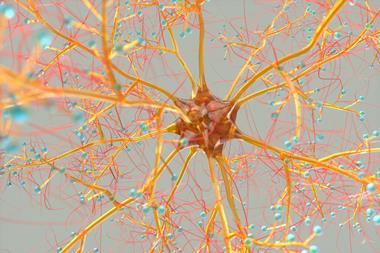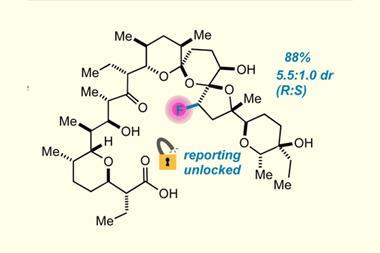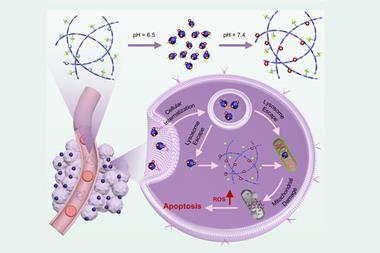Readers discuss antibiotic challenges, muse about micrographs and remember Philip Eaton
Injection v ingestion
While the reality of the forthcoming ‘apocalypse’ of antimicrobial resistance (AMR) is well understood, only one of the articles in Chemistry World’s special collection on AMR briefly mentioned the other side of the story, the microbiome.
Nowadays, it is clearly understood that the microbes in our intestinal tract somehow influence our health, including the immune system, a benefit that antibiotics are likely to compromise. Andy Extance’s article states that ‘bacteria have the capacity to assimilate genetic material’ and it is in this way that the microbiome can act as a repository for those mobile genetic elements capable of conferring antibiotic resistance to pathogens.
This was the basis of Frederick Griffith’s famous 1920s experiments in which a ‘transforming principle’ managed to turn a harmless strain of Streptococcus pneumoniae into a killer. To put it another way, it is the use of oral antibiotics that generates the genes for antibiotic resistance within the microbiome which, in turn, spreads the problem back into the body.
In principle, therefore, one can both prevent damage to our health and also delay the development of resistance if antimicrobials were designed solely for IV infusion or depot injection. While the overall benefit of avoiding oral antibiotics is hard to estimate, it should at least minimise cases of Clostridium difficile overgrowth, which is currently a massive problem in its own right. It is also interesting to note that farm animals grow larger under the influence of oral antibiotics, a phenomenon probably associated with microbiome disturbance and, perhaps, helping to account for human obesity.
In summary, while IV antibiotics may be valuable as a stop-gap measure, there are many pressing reasons to move away from chemical antibiotics and back toward the original antibacterial approach of phage therapy.
Dave Smith MRSC CChem
Alnwick, UK
Small companies, big cost
Andy Extance has written an excellent and timely review of the problems facing researchers seeking to provide new antibiotics in the face of growing bacterial resistance to the existing portfolio of drugs. One factor that emerges is the preponderance of small pharmaceutical companies at the forefront of the discovery and early development of new antibacterial classes and individual molecules. Gone are the days of massive investment by big pharma companies at the discovery stage.
One problem faced by small companies is the huge cost of clinical trials and presentation of the resultant data to the FDA and other international regulators. These bodies appear to act with extreme temerity when the data is presented by small pharma companies. My own experience of this involved the drug ridinilazole for the treatment of hospital-acquired infection by Clostridium difficile. This affects more than 450,000 patients each year in North America and a similar number in western Europe.
Ridinilazole was discovered through an academic–industrial collaboration and the small pharma company Summit took the drug through phase 3 trials. Here it showed comparable activity to the current drug of choice, vancomycin (73% and 71% response rates). However, the rates for recurrence of infection were 8% for ridinilazole versus 17% for vancomycin, which could mean 80,000 fewer patients facing recurrence (and perhaps death).
In addition, ridinilazole did not damage the gut biome. Despite these advantages, the drug was rejected and one wonders how many other drugs are lost when they don’t have the financial and reputational clout of big pharma behind them.
John Mann FRSC
Shrewsbury, UK
Perception problems
Philip Ball’s splendid article displaying the (in)famous ‘life on Mars’ electron micrograph asks whether AI can distinguish living and non-living systems. D’Arcy Thompson showed that all life forms must obey the physical and mechanical laws and readers might also be interested in the work of Cyril Stanley Smith. Cast in the same mould as Thompson, his primary aim was to understand metallurgical and ceramic microstructure. His papers juxtapose images of the grain structure of alloys with those of aqueous foams and human fat cells, each taking up a form dependent on the balance of interfacial tensions. Thus, each presents a similar structure.
Indirectly, Philip Ball asks another general question. It concerns Gestalt perception, the separation of foreground from background. Is it acceptable to colour in electron micrographs and in so doing, influence observers to see what you’d prefer them to see?
Julian Evans MRSC
London, UK
Philip Eaton (1936–2023)
Philip Eugene Eaton was born on 2 June 1936. He was an American organic chemist widely remembered for his 1964 invention and synthesis of cubane – a molecule of eight carbon atoms arranged into the shape of a cube, with a singular hydrogen atom bound to each of the cube’s corners. This was a chemical feat once deemed to be impossible by theoreticians and practical chemists alike.
Some have branded cubane as a mere chemical oddity. But for me, it represents the very essence of science: to understand and expand the boundaries of what is possible. It was the supposed impossibility of cubane’s synthesis that drove Eaton to conduct one of the greatest chemical masterpieces of the 20th century. This not only required a sophisticated understanding of physical and chemical law, but deep courage and bravery to dare to tread the boundaries between known and unknown, probable and improbable, possible and impossible.
Cubane is truly a molecule of eternal beauty (and when I say eternal, I mean eternal: cubane’s half-life at room temperature and pressure far exceeds the lifespan of the universe itself).
On 21 July, I sent Eaton an email in which I delineated my plans to develop cubane-based lifeforms, whereby all benzene-based amino acids in an organism were replaced by cubane-based amino acids. Thereby, cubane would be a substrate for life! And perhaps even more excitingly, there may be leagues of extraterrestrial creatures in strange regions of the universe where cubane-based lifeforms do exist. They would be called ‘The Cubites’, or ‘The Children of Cubane’. What I did not realise upon sending this email was that this day would be the day that Eaton passed away.
While the possibility of cubane-based lifeforms remains uncertain, what I can say with absolute certainty is that I am a ‘Child of Cubane’: Eaton’s personal mentorship and his wondrous creations have ignited within me an unending passion and inspiration to dedicate my life to expand the boundaries of what is possible. I am filled with an undying gratitude for his work, and for this I shall forever be grateful.
Professor Eaton, thank you for all that you have done. Words will never be able to encapsulate the gratitude that I hold for you.
Aidan Hurst
Oxford, UK
Chemistry World welcomes letters, which should be concise (normally fewer than 300 words) and timely. Those selected for publication are subject to editing for clarity and length. Letters should be marked ‘for publication’ and sent to chemistryworld@rsc.org
We do not routinely acknowledge letters.












No comments yet